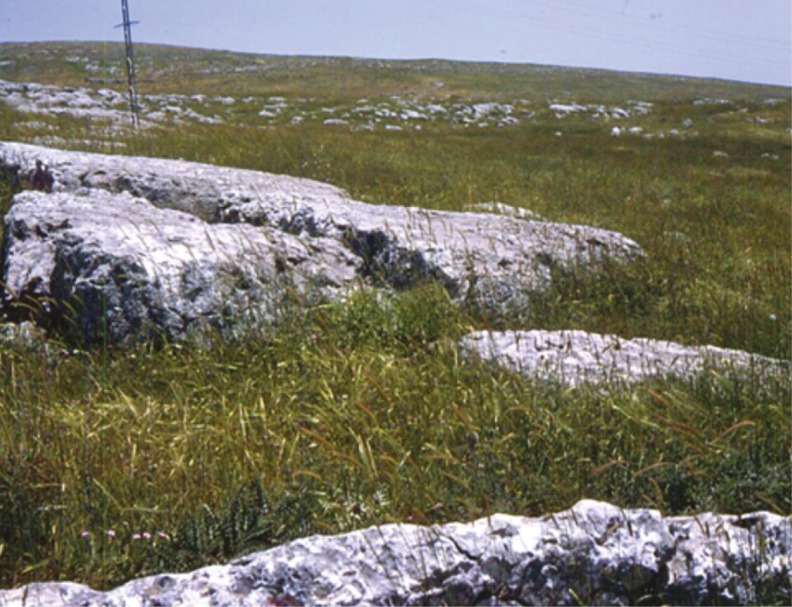Body representation in monkeys’ brains

Rhesus macaque (Macaca mulatta). Image courtesy of Pixabay/RobbieRoss.
A sense of ownership of one’s own body is a central element of self-consciousness. The psychological and neurological mechanisms underlying this sense can be investigated through illusions, such as the rubber-hand illusion, in which a person perceives an artificial object as part of themselves. Wen Fang et al. (pp. 20151–20157) developed an experimental paradigm combining a rubber-hand illusion with a behavioral task, which enabled the illusion to be observed and quantified in monkeys as well as in humans. In experiments involving 25 human participants, ages 18–28 years, and 4 adult male rhesus macaques, the authors measured the difference between a participant’s perceived and actual arm position—termed proprioceptive drift—as a function of the disparity between the “real” and “illusory” arm positions. In both humans and monkeys, proprioceptive drift increased with disparity for small disparities, but plateaued or decreased at large disparities, suggesting that the strength of the illusion decreased with increasing disparity. The activity of neurons in the premotor cortex of monkeys’ brains, recorded during the experimental task, correlated with the measured proprioceptive drift, and a Bayesian causal inference model of sensory integration reproduced the observed drift–disparity relationship. The results suggest how the brain establishes a sense of body ownership, according to the authors. — B.D.
Designing effective antibodies against Ebola virus
Antibodies that target the Ebola virus (EBOV) glycoprotein (GP) have shown protective activity against the virus and have the potential to help control the disease. Recent studies have shown that an antibody’s in vivo antiviral activity involves a combination of neutralization by the Fab domain and receptor engagement by the Fc domain, which engages Fcγ receptors (FcγR) to mediate effector leukocytes and control viral infection. Stylianos Bournazos et al. (pp. 20054–20062) selected human monoclonal antibodies (mAbs) that targeted representative EBOV GP epitopes and set out to determine the contribution of Fc effector activity to antibody-mediated protection in a mouse model of EBOV infection. The authors analyzed the in vivo potency of various anti-GP mAbs in mice deficient in murine FcγRs and exclusively expressing the human receptors and found that mAbs against specific epitopes—the GP chalice bowl and the fusion loop—required Fc–FcγR interactions to mediate optimal protective activity. In contrast, anti-GP mAbs targeting membrane proximal epitopes or the GP mucin domain did not rely on FcγR engagement to confer activity. The results revealed that anti-GP mAbs exhibit differential requirements for FcγR engagement to mediate antiviral activity in vivo. According to the authors, designing anti-EBOV antibodies for optimum clinical efficacy may require studying their capacity to engage and activate appropriate FcγR pathways. — S.R.
Genetic responses of wheat to global warming

Field of wild emmer wheat, Triticum dicoccoides, in Upper Galilee, Israel.
Wild relatives of domesticated crops represent a source of genetic diversity for improving genetically impoverished crop cultivars. Global warming endangers populations of wild crop relatives, but the populations’ genetic responses to the stresses imposed by global warming remain uncertain. Yong-Bi Fu et al. (pp. 20002–20008) characterized genetic changes in 10 Israeli populations of wild emmer wheat (WEW), a wild relative of cultivated wheat, between 1980 and 2008. Estimated overall genetic diversity in the populations was lower in 2008 than in 1980. The 2008 WEW genomes exhibited signs of elevated selection and increased mutational burdens compared with the 1980 genomes. However, most of the populations also carried more beneficial mutations in 2008 than in 1980. Genetic responses specific to variations in temperature and rainfall were varied and complex. High temperatures and low rainfall over the 28-year period were both associated with more deleterious mutations, higher nucleotide diversity, and lower genetic differentiation among populations in 2008 than in 1980. High temperatures were also associated with lower mutational burden and reduced selection, while low rainfall was associated with high mutational burden. The results enable better understanding of evolutionary responses in plant populations threatened by global warming and provide a foundation for modeling plant adaptability and vulnerability to global warming, according to the authors. — B.D.
External costs of air pollution in the United States

Smokestacks from a wartime production plant in 1942. Image courtesy of Wikimedia Commons/Alfred T. Palmer.
Previous research has suggested the need to incorporate external costs of pollution into national accounts. To this end, Peter Tschofen et al. (pp. 19857–19862) updated existing damage estimates due to fine particulate matter for the United States using the Environmental Protection Agency’s 2008 through 2014 National Emissions Inventory—the most recent comprehensive national emissions data available. The authors used multiple integrated assessment models to estimate monetized gross external damage (GED) by economic sector for the years 2008, 2011, and 2014 using emissions, mortality, and population data. Nationwide total GED attributable to economic activity fell by more than 20% between 2008 and 2014, but the decrease was not uniform across sectors. Utility sector GED fell by more than half during this time period, leaving agriculture with the largest GED of any sector as of 2014. Further, 75% of GED attributable to economic activity occurred in 4 economic sectors—agriculture, utilities, manufacturing, and transportation. Uncertainty in GED estimates was high for emissions from ground-level sources, which tend to be estimated rather than measured directly. According to the authors, the results suggest target areas for emissions reduction efforts and provide a starting point for further studies of particular industries or at different spatial scales. — B.D.


